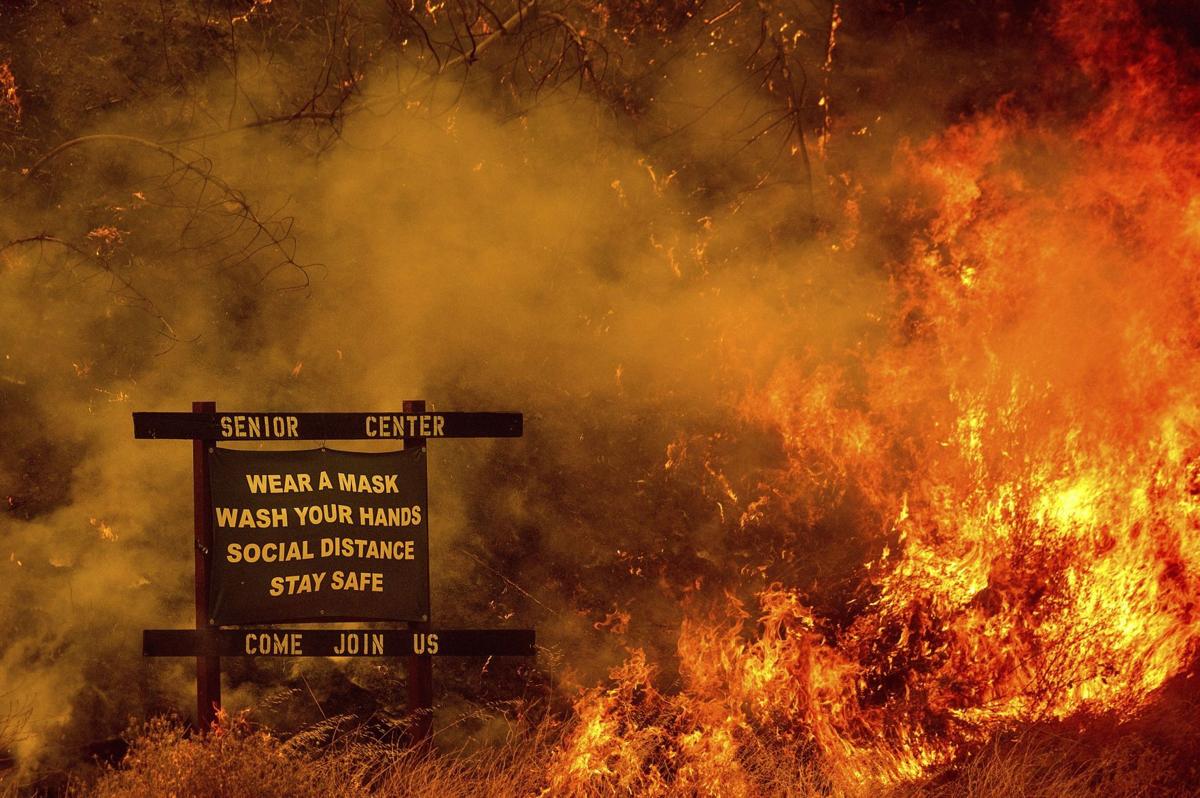|
Gefallen Engel U-666
Join Date: Jul 2013
Location: On a tilted, overheated, overpopulated spinning mudball on Collision course with Andromeda Galaxy
Posts: 28,018
Downloads: 22
Uploads: 0
|
 I"m gonna sue for plaigarism! Not even a deferential nod!
I"m gonna sue for plaigarism! Not even a deferential nod!
Quote:
Originally Posted by Aktungbby

We have our priorities straight in Napa!  and and
|
Quote:
Originally Posted by Aktungbby

The tally stands at 11,000 lightning strikes in 72 hours; spawning 360 California fires; 23 of which are considered major infernos: resulting in a request for 375 additional engines from out of state, as well as additional hand crews. The LNU Lightning Complex(Napa)conflagration now threatens 1900 homes across five counties. Fortunately the winds have been mild; not like the 50+ mph gales that drove the infernos two years ago. EDIT: One of the crucial factors afflicting the firestorm's overwhelming demands is the massive reduction in trained inmate-fire crews who are, in effect, the backbone of frontline handcrew fire suppression. Of the 190 certified 17 man crews, available in 2018 infernos, only 90 or so are available as this fire season starts. This due to the fire training camp shutdown's and the early release of inmates to reduce serious Covid infections in the CA prison systems.
|
https://www.theatlantic.com/science/archive/2020/08/exponential-threat-pandemic-wildfires/615574/
Quote:
Jacob Stern  : Two Disasters Are Exponentially Worse Than One : Two Disasters Are Exponentially Worse Than One 
Californians face an impossible choice between virus safety and fire safety.
Eleven thousand lightning strikes, 370 wildfires, a pandemic, a heat wave, and rolling blackouts—California has endured a lot this week. Hundreds of thousands of acres have burned, and tens of thousands of people have had to evacuate. The largest of the blazes—the LNU Lightning Complex fires, which alone span Napa, Sonoma, Solano, and Lake Counties—is only 7 percent contained.
One disaster is bad. Two are worse, but the damage doesn’t just double. This confluence of circumstances can seem like a series of independent misfortunes, when in fact it is a tangle of loose contingencies. A single high-pressure system rolling in from the Southwest initiated the heat wave and the thunderstorms, which together created the conditions for the fires, which will likely both exacerbate and be exacerbated by the pandemic, which has diminished firefighting resources and, along with the heat wave, contributed to the blackouts by keeping people at home with their air-conditioning on full blast.
These overlapping disasters compound. “It’s more than plus one,” says Susan Cutter, a disaster researcher at the University of South Carolina. To her knowledge, no one has quantified this synergy exactly, but “it certainly affects the response, probably in exponential ways.
California is witnessing this exponential relationship firsthand. Smoke now blankets much of the state—on Wednesday, air quality in the Bay Area was the worst in the world—but N95 masks, essential for going outside in such conditions, have proved almost impossible to acquire since COVID-19 emerged. That shortage could in turn worsen the pandemic, since studies have found that breathing polluted air leaves the lungs more vulnerable to the coronavirus. Firefighting forces, which in California rely heavily on inmate labor, have been depleted by both COVID-19 outbreaks in prisons and the early-release policies instituted to prevent them.
“You only have a certain amount of emergency-management capacity in the way of people and equipment and supplies,” says Mark Abkowitz, a civil- and environmental-engineering professor at Vanderbilt University. “If you think of that as a kind of reservoir, and you’re having to draw on it for multiple purposes at the same time, it leads to situations much more difficult in terms of getting the right amount of resources to the locations where they’re needed.”
These dynamics also play out at an individual, psychological level. Mental-health researchers have repeatedly found that a victim’s risk of post-disaster psychological trauma depends in large part on their history of mental-health problems. With each successive trauma, the risk heightens and the burden accumulates. “You can think of coping resources in part as a fixed entity, like a muscle,” says Joe Ruzek, a longtime PTSD researcher at Stanford University and Palo Alto University. “You have a certain amount of energy to deploy,” and at some point the amount required exceeds the amount available. That, at least in theory, is when resilience reaches its limit. For many people—especially health-care workers, COVID-19 patients, and those who have lost loved ones—the past six months have steadily depleted those energy stores. As a result, people may have more trouble than usual coping with the wildfires, which leave deep psychological scars even in ordinary years.
“You’ve got this background level of anxiety due to COVID-19, and then you add wildfires on top of that—that’s going to boost people’s level of distress,” says Steven Taylor, a psychiatry professor at the University of British Columbia, who last year published a book on the psychology of pandemics.
Read: What happens if a “big one” strikes during the pandemic?
What makes the wildfire-pandemic combination uniquely devastating at both a societal and a personal level is that the two disasters demand opposite responses. A pandemic, as Americans have learned, requires people to stay home and practice social distancing. A wildfire, by contrast, requires them to evacuate and congregate. The director of California’s Office of Emergency Services has acknowledged the need for an evacuation plan tailored to the pandemic, and the state’s new rules provide for prepackaged meals, health screenings, and the conversion of hotels, campgrounds, and college dorms into shelters. Still, for most people, following one safety protocol will mean compromising on others. Hence the Californian’s dilemma: Those who flee risk infection; those who stay risk incineration. Something has to give.
Taylor worries about what this will mean for those torn between staying and fleeing. Persuading people to leave behind their home and possessions can be tricky even in ordinary times, he told me. Now imagine someone who has spent the pandemic adhering religiously to social-distancing guidelines. Imagine that she’s immunocompromised. Maybe a loved one has died of COVID-19. It is nighttime when the evacuation order arrives. The wind is blowing, and the fire is advancing, and there is nowhere to go but a shelter.
“That could paralyze some people behaviorally, not knowing what to do,” Taylor said. “It could be very bad for some people.”
|
Jacob Stern has absolutely committed Plagiarism ie:
Quote:
|
Plagiarism is the representation of another author's language, thoughts, ideas, or expressions as one's own original work
|
OH well... someone reads my  posts and expands on the concept I 'spose... posts and expands on the concept I 'spose... but it's still a rip off! https://en.wikipedia.org/wiki/Plagiarism but it's still a rip off! https://en.wikipedia.org/wiki/Plagiarism
__________________

"Only two things are infinite; The Universe and human squirrelyness; and I'm not too sure about the Universe"
Last edited by Aktungbby; 08-22-20 at 10:54 PM.
|